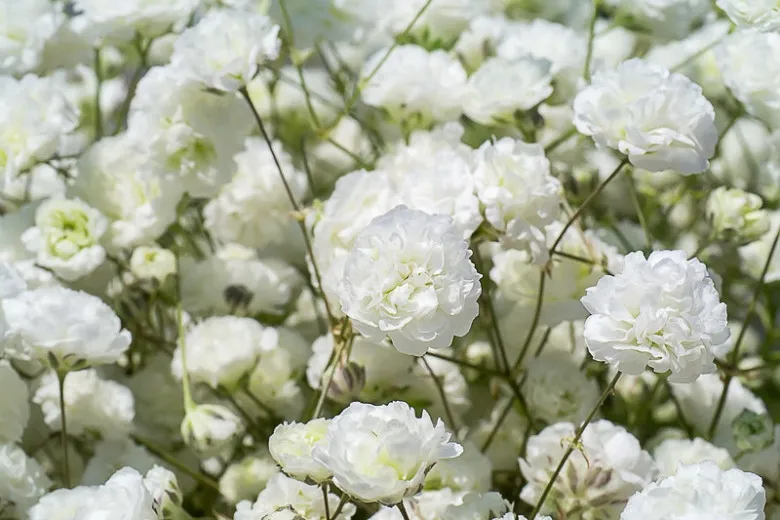Renowned for its role as a staple in cut flower arrangements, Baby’s Breath (Gypsophila paniculata) is a botanical gem that certainly merits a prominent place within the landscape. Its delicate clusters of minute flowers in shades of white or pink impart both contrast and texture to perennial borders, gracing the scenery from early summer through the fall. The wispy, cloud-like appearance of its blooms carries an irresistible allure, exerting a softening influence on the surrounding flora. Furthermore, it excels at concealing the waning foliage of spring-blooming bulbs and effectively filling the gaps left by earlier summer blossoms, such as the Oriental poppies (Papaver orientale).

- The growth habit of Baby’s Breath is characterized by decorative mounds, achieving heights and widths of 2 to 3 feet (60-90 cm). These mounds are blanketed with abundant, enduring, single or double flowers, contrasting beautifully against the backdrop of very small, blue-green leaves. Flourishing under full sun exposure, this plant thrives in average, dry, and well-drained soils. It displays a preference for alkaline soils, which can be facilitated by incorporating lime into acidic soil conditions. Once established, Baby’s Breath prefers to be left undisturbed, thriving with minimal intervention.
- This botanical treasure requires minimal upkeep, boasting high resistance to diseases. It stands resilient against drought and salt, making it a versatile option for various landscapes. Its blossoms beckon butterflies while managing to escape the radar of deer.
- For an impactful visual presentation, consider planting Baby’s Breath in groups of 3 to 4 specimens. Its versatility extends beyond the garden’s borders, as it serves as an exceptional choice for cut flower arrangements.
- Aiming for reblooming? Prune the plant back after the initial flowering cycle, providing the stimulus needed for a subsequent burst of blossoms.
- Although native to Europe and Asia, Baby’s Breath has found a welcoming home across gardens worldwide, captivating with its delicate beauty and ability to accentuate a variety of landscapes. To ensure responsible planting practices and prevent potential invasiveness, it’s important to check the status of this species within the United States and explore alternative native plant options.